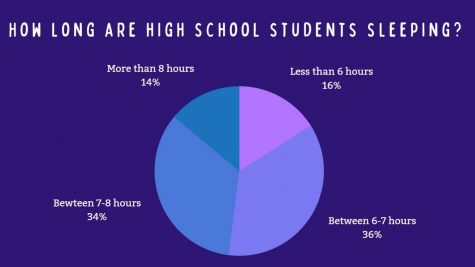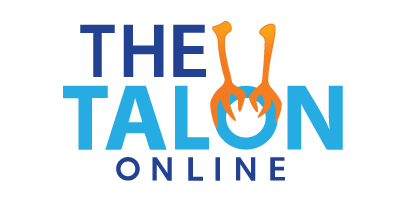Has the pandemic changed students’ sleep schedules for the better or worse?
November 20, 2020

Princesses in castles and astronauts in space, your mind seems to be a pretty funny place. You live in a world where there is no pain, just rainbows, and sunshine with the absence of rain. It’s a nice world, but you can’t stay forev- rrr rrr rrr.
Your alarm wakes you up but your dreams were much better.
Sleep. It’s so important. It can take months or even years to build a sleep schedule. But as 2020 throws new challenges at us daily, there is one habit it has changed almost all of us: Sleep. Whether it be anxiety and restless nights or a more peaceful slumber, it’s pretty likely everyone has experienced some change in their sleep schedule as a result of the pandemic.
“My focus has definitely gone down the drain,” senior Amelia Polin said. “I can barely stay awake for zoom meetings and I end up having to take multiple naps throughout the day.”
For high school students, answers were across the board when it came to sleeping more or less.
In a student conducted poll, 56 percent of students said they sleep more compared to last year. Of the group of students who slept more, the average slept about 2 hours and 15 minutes more a night than prior to the pandemic.
“I have been sleeping more this year than last year,” junior Connor Cracium said. “I go to sleep about the same time as I did last year, but because classes start later I get to sleep in, meaning I get more sleep than before.”
However, this is not always the case. The pandemic has brought more stress and anxiety, making it a challenging task for some to fall asleep at night.
“This year I’m getting about two-three hours less of sleep compared to last year,” Polin said.
In the poll, nearly one-third of students answered that it is harder to fall asleep during the pandemic. Although there are so many factors into what it takes to fall asleep, adding a global pandemic surely doesn’t help.
“I am way less productive and it’s harder to focus because I’m not getting good sleep,” senior Moira Yee said.
Psychology teacher Mrs. Caylan Healy has noticed a shift in her student’s sleep schedules from the beginning of the pandemic.
“Student’s schedules have been off since the beginning of the pandemic in March,” Mrs. Healy said. “I had many students tell me that they are up all night and sleep all day. I still have students turning in assignments to me at 2, 3, and 4 in the morning. This is extremely alarming because the teenage brain needs between 8 and 10 hours of sleep a night.”
It would be assumed that with a later start time and a more free schedule, students would be getting the amount of sleep they need. Unfortunately, in the poll, only 14 percent of students answered they were getting eight hours of sleep or more. The majority of students slept between six and seven hours, which is not enough according to the CDC.
Junior Allison Gadlage is a student who has found herself getting more sleep throughout the pandemic and it has been to her advantage.
“I think I am more productive with my increased sleep and work more intentionally for longer time periods,” Gadlage said. “I feel more awake and ready to work in the mornings and have more energy to accomplish tasks throughout the day.”
Not everyone has the attention span Gadlage does. Many high school students take naps throughout the day to get the afternoon energy boost they need.
In the survey, 78 percent of students said they took naps sometimes or regularly. The average length of a nap was about two hours long.
With the shift to remote learning, it can be a blessing or a curse when it comes to how much sleep students are getting.
“Staying up and doing homework as well as going on my phone before bed is probably causing me to sleep less,” Polin said.
Cracium keeps the right mindset before going to bed, steering clear of things that could keep him awake.
“I’ve tried to avoid distractions like videogames and procrastination that would make me go to sleep later so I can get more sleep every night,” Cracium said.
As for a teacher’s perspective, Mrs. Healy is very thankful for the flexibility of the schedule, allowing her to sleep more.
“I am getting a lot more sleep with this new schedule,” Ms. Healy said. “I am used to getting up around 5 every morning. After getting up at 5 every morning for the last 12 years this is a welcomed change.”
Mrs. Healy believes that although this remote schedule may allow for longer sleep, her students are lacking the productivity they used to have in an in-person environment.
“I think that although students might believe it is more beneficial as a teacher I can see that it is not,” Mrs. Healy said. “People, especially children, thrive in a scheduled environment. I am seeing a lot more missing work and lower test scores as a result of not having a specific learning schedule every day.”
Students like Gadlage are thankful for this freedom in her schedule to complete her work when she pleases, along with the opportunity to gain sleep.
“Having more freedom in my schedule in addition to having less work, homework, and other commitments have helped me to sleep more each night,” Gadlage said. “The half hour breaks help me be more productive and finish work and allow my brain a break to focus more on the next class. I also feel like using more technology throughout the day and being on zooms all day for school in addition to turning in all of my homework online makes me more tired and have a better night’s sleep.”





